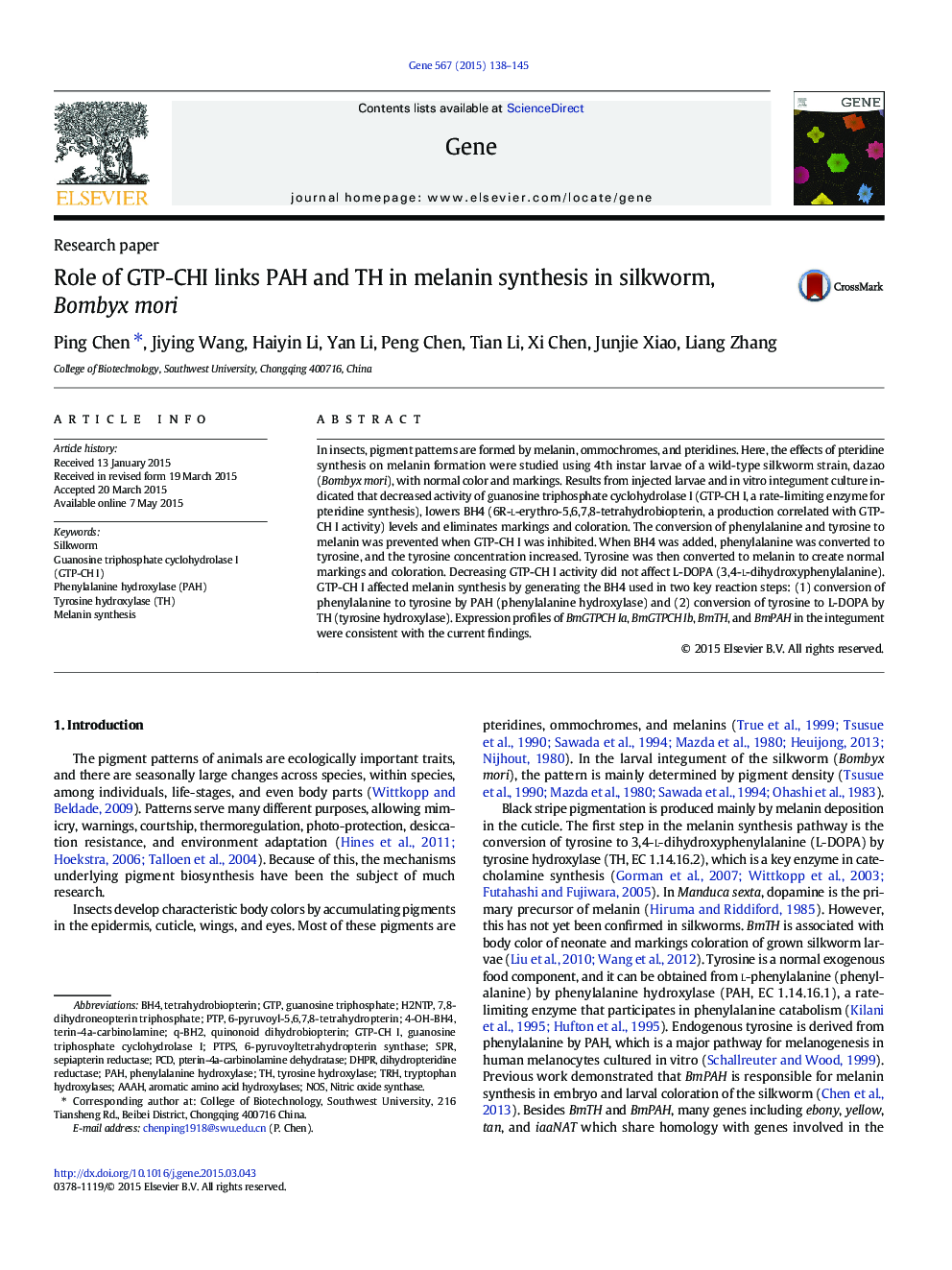| Article ID | Journal | Published Year | Pages | File Type |
|---|---|---|---|---|
| 2815641 | Gene | 2015 | 8 Pages |
•Interactions of GTP-CH I and PAH (or TH) are important for many physiological processes.•Pteridine biosynthesis may be related to melanin formation by the q/q silkworm strain.•Here we evaluate detailedly the effect of GTP-CH I on melanin synthesis in molecule mechanisms or pathways.•The viewpoint is developed in a general way.
In insects, pigment patterns are formed by melanin, ommochromes, and pteridines. Here, the effects of pteridine synthesis on melanin formation were studied using 4th instar larvae of a wild-type silkworm strain, dazao (Bombyx mori), with normal color and markings. Results from injected larvae and in vitro integument culture indicated that decreased activity of guanosine triphosphate cyclohydrolase I (GTP-CH I, a rate-limiting enzyme for pteridine synthesis), lowers BH4 (6R-l-erythro-5,6,7,8-tetrahydrobiopterin, a production correlated with GTP-CH I activity) levels and eliminates markings and coloration. The conversion of phenylalanine and tyrosine to melanin was prevented when GTP-CH I was inhibited. When BH4 was added, phenylalanine was converted to tyrosine, and the tyrosine concentration increased. Tyrosine was then converted to melanin to create normal markings and coloration. Decreasing GTP-CH I activity did not affect L-DOPA (3,4-l-dihydroxyphenylalanine). GTP-CH I affected melanin synthesis by generating the BH4 used in two key reaction steps: (1) conversion of phenylalanine to tyrosine by PAH (phenylalanine hydroxylase) and (2) conversion of tyrosine to L-DOPA by TH (tyrosine hydroxylase). Expression profiles of BmGTPCH Ia, BmGTPCH Ib, BmTH, and BmPAH in the integument were consistent with the current findings.
